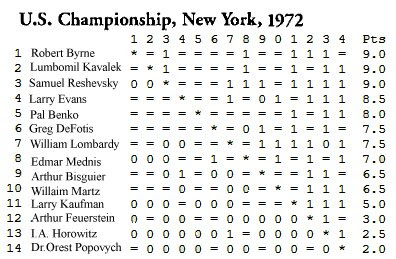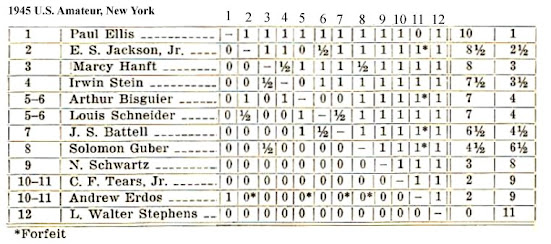 |
Blatantly racist Governor George C. Wallace of Alabama was shot by Arthur H. Bremer at a Laurel, Maryland political rally; as a result Wallace spent the rest of his life in a wheelchair.
Wallace forgave Bremer in 1995 and wrote to him expressing the hope that the two could get to know each other better, but Bremer never replied and Wallace died in 1998.
Bremer was released from prison 2007, at the age of 57, having served 35 years of his original sentence.
Five men were apprehended in attempt to bug the Democratic National Committee headquarters in Washington, D.C.’s Watergate hotel. They were later found to be agents of President Nixon's reelection campaign and ultimately their arrest lead to him being the only President to resign from office.
It was the year "Hanoi Jane" Fonda visited North Vietnam and voiced her support of the Communist. While in Vietnam, Fonda appeared on 10 radio programs to speak out against the U.S. military’s policy in Vietnam, beg pilots to cease bombing non-military targets and deny the inhumane treatment and torture of U.S. prisoners of war.
Durimg her trip a photograph was taken of her seated on an anti-aircraft gun in Hanoi. To this day some people cannot understand how her actions generated disgust and loathing among Vietnam veterans.
Baseball great Gil Hodges, FBI Director J. Edgar Hoover and former President Harry S. Truman died that year.
Chess players who passed were Victor Soultanbeiff (1895-1972) the Belgium champ in 1932, 1934, 1943, 1957 and 1961, Georgy Lisitsin (1909-1972) the Leningrad Champion in 1933-34, 1939 and 1947.
IM Kazimierz Makarczyk (1901-1972) died in Lodz, Poland. He won the Polish championship in 1948 and Sir George Thomas (1881-1972) died in London at the age of 91.
Finally, Mary Bain (1904-1972) died in New York City at the age of 68. She was Women's World Championship Challenger in 1937 and 1952 and was US Women's Champion from 1951-53.
It was also the year Bobby Fischer won the World Championship when he defeated Boris Spassky.
The 1972 US Championship turned out to be the great Al Horowitz' last tournament. Besides Samuel Reshevsky, Robert Byrne, Larry Evans and Pal Benko a possible winner had to be former Czech GM Lubomir Kavalek, who, in August 1968, had been playing in a tournament in Europe when the Russians invaded his home land and he defected.
A new arrival in the US, Kavalek had been very successful on the European tournament circuit and he possessed excellent theoretical opening knowledge plus he was a good all around player. He could nurse a small advantage to victory and he could slug it out tactically with the best. Or, he could outplay his opponent in the ending. He did have one weakness...he had an amicable personality and was often content to draw.
Late in the tournament Kavalek's drawing binge allowed Evans and Byrne to catch up in round 10 and in the 12th round Reshevsky made it into a three-way going into the last round. Besides those three, Evans and Benko also had an outside shot at tying for first.
This championship was also a qualifier for one spot in each of the two Interzonals and even Lombardy and newcomer Greg DeFotis had a shot at qualifying.
In the final round Kavalek drew Benko, Byrne drew with DeFotis and Reshevsky drew with Martz making it a three way tie for first. Because only two Interzonal spots were available a playoff was necessary. It was held in Chicago in February 1973, and Kavalek lost his game against Reshevky who went to the Petropolis Interzonal and Byrne to he Leningrad Interzonal. Surprisingly, in 1973 Byrne qualified for the Candidates matches; he lost to Spassky +0 -3 =3.
Kavalek's win against Larry Kaufman concluded with a combination suitable for inclusion in a book on tactics and it won the brilliancy prize.
[Event "US Championship, New York"]
[Site "New York, NY USA"]
[Date "1972.05.07"]
[Round "?"]
[White "Larry Kaufman"]
[Black "Lubomir Kavalek"]
[Result "0-1"]
[ECO "A21"]
[WhiteElo "2400"]
[BlackElo "2555"]
[Annotator "Stockfish 15"]
[PlyCount "46"]
[EventDate "1972.04.23"]
{Old Indian Defense} 1. c4 e5 2. Nc3 d6 3. Nf3 Bg4 4. d4 {This is probably
best although 4.e3 is also playable.} Nd7 5. e3 {At the time this game was
played there was a huge amount of opening theory on just these first 5 moves!
Soviet theoreticians recommended 5.Be3, but Kavalek thought Kaufman's modest
text was probably the best he had.} Ngf6 6. Be2 c6 7. h3 Bh5 {According to
Kavalek after 7...Bxf3 8.Bxf3 both sides have an easy game.} 8. dxe5 {Kavalek
called this a serious mistake because it frees black's B on f8 and, also,
allows his N to occupy e5 at the opportune moment. Curiously, Stockfish
evaluates the position as almost dead even while Kaufman's Komodo 14 gives
black a tiny edge after the text.} (8. g4 {This was the move that concerned
Kavalek. White does have a slight advantage after} Bg6 9. Nd2 Qb6 10. f4) (8.
b3 e4 9. Nd2 Bg6 10. O-O d5 11. f4 exf3 12. Bxf3 {Black is slightly better.
Davies,N (2485)-Hodgson,J (2545) London 1989}) (8. d5 Be7 9. Nd2 Bxe2 10. Qxe2
O-O 11. e4 {is equal. Podzielny,K (2450)-Trapl,J (2385) Germany 1992}) (8. Qb3
{This engine move should result in white gaining an edge.} Qb6 9. g4 Bg6 10.
Nh4 Be7 11. g5 Ng8 12. Rg1 {White is better.}) 8... dxe5 9. O-O e4 10. Nd2 Bg6
{Black stands better, even if only slightly. Kavalek was was already thinking
about the possibility of mating threats on the b8-h2 diagonal.} 11. b3 Qc7 12.
Qc2 Qe5 13. Rd1 Bd6 14. Nf1 O-O 15. Bb2 Qe7 16. Rd2 Ne5 17. Rad1 {As Kavalek
observed...White has completed his development but his position contains no
threats and he must wait to see what black will do.} (17. Ng3 {would be met by}
Nd3 18. Nd1 (18. Ngxe4 {loses to} Nxe4 {and white has no good recapture.} 19.
Rxd3 Nc5) 18... h5 {with a dangerous attack brewing.}) (17. Qd1 {This is
white's best chance because now 17...Nf3 fails.} Nd3 (17... Nf3+ 18. Bxf3 exf3
19. Rxd6 {wins.}) 18. Bxd3 exd3 19. f3 {and if nothing else, white has avoided
immediate disaster.}) 17... Nf3+ {While not actually decisive, after this
black is clearly better.} 18. gxf3 {After this white is completely lost.
Capturing with the B would have allowed him to hang on.} (18. Bxf3 exf3 19. Qc1
fxg2 20. Rxd6 gxf1=Q+ 21. Kxf1 {Black is better, but there is no immediate win.
}) 18... exf3 19. Bd3 Qe6 {With a simple mate threat ...Qxh3-g2#} 20. Ng3 Qxh3
21. Bf1 Qh6 22. Bd3 Ng4 23. Nce4 Qh3 {White resigned.} 0-1

















